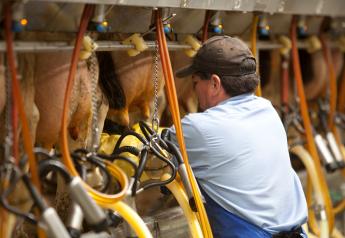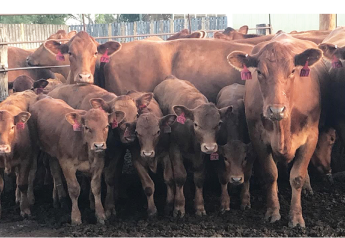POC Chemistry Analyzers Can Be Practical For On-Farm, Patient-Side Use

Sometimes technology is too expensive or unwieldy to use routinely in a bovine veterinary practice. Fortunately, that’s not the case with hand-held, point-of-care (POC) blood gas and electrolyte chemistry analyzers, according to Amanda Kreuder, DVM, PhD, DACVIM (LAIM), Iowa State University College of Veterinary Medicine.
While single-use analyzers are available, Kreuder addressed the value of multiuse analyzers during a presentation at the American Association of Bovine Practitioners annual conference last September.
Two of the common multiuse analyzers she referenced are the i-STAT 1, offered by Zoetis, and the Element POC, marketed by Heska.
While neither analyzer offers bovine-specific reference ranges, many of the analytes measured have been validated for use in cattle.
“The beauty of these POC analyzers is that they are handheld units that can be carried in the truck, easily used on-farm and patient-side as long as the weather permits,” she says. “Being able to do a POC analysis has made a huge difference for me and my clinical practice.”
Kreuder says the tool allows her to provide more targeted therapy to many of her patients, because the POC analyzers can rapidly diagnose acid-base and electrolyte abnormalities.
With adult animals, for instance, Kreuder says analyzers have helped her address downer cow syndrome and differentiate between common gastrointestinal (GI) conditions.
“I think this has led to decreased treatment failure, compared to before I had this tool available,” she says. “I think it can also decrease unplanned repeat visits, because it can help you treat more appropriately the first time.”
On the other hand, Kreuder adds the tool has the potential to increase planned repeat visits.
“So, you can run the blood work, know the calf has some major issues that need corrected and maybe have a talk with the farmer about whether or not they would be willing to let you plan to come back the next day, do another treatment and make sure the calf is headed in the right direction,” she says.
Kreuder believes veterinarians in a mixed-animal practice will be able to find a broad use for the analyzers as well as bovine practitioners.
“A lot of the things we’re going to use the analyzer for in a bovine practice can (be applied to) small ruminant, equine and small-animal
practices,” she says.







